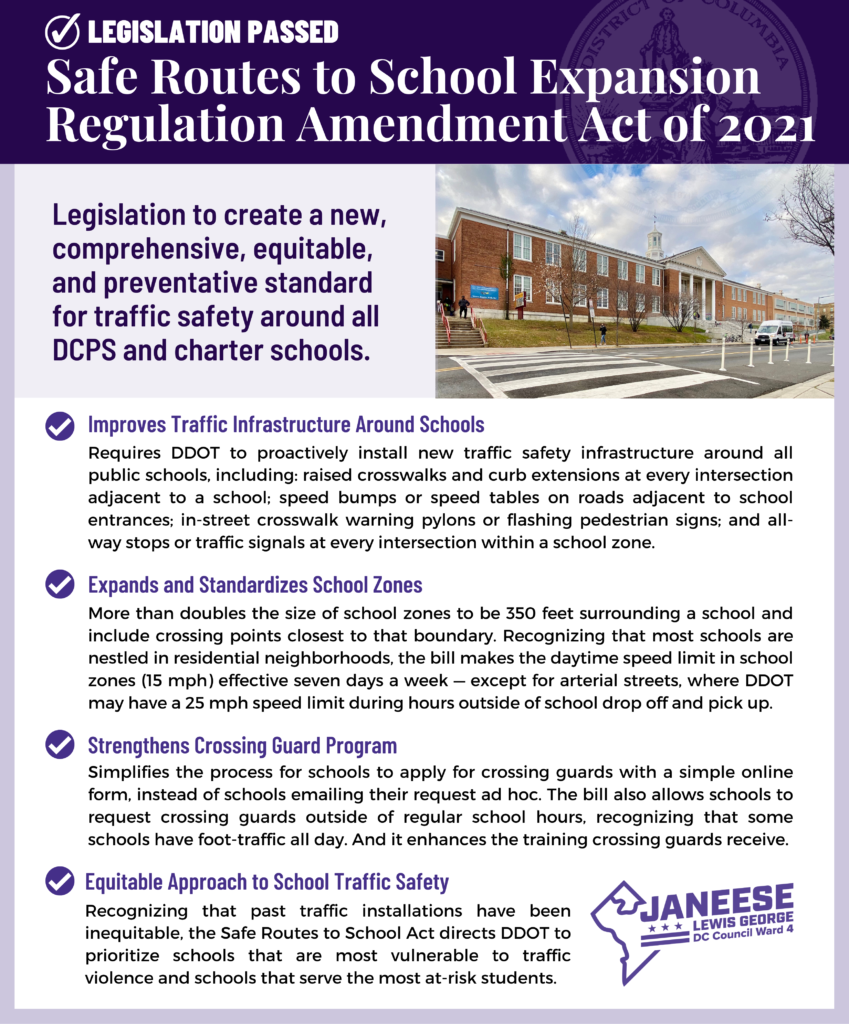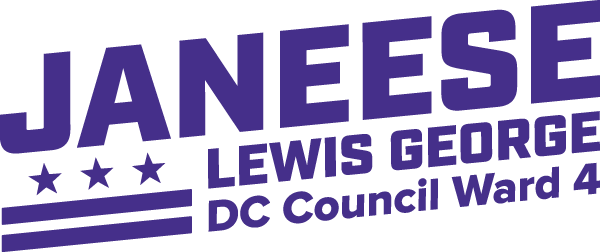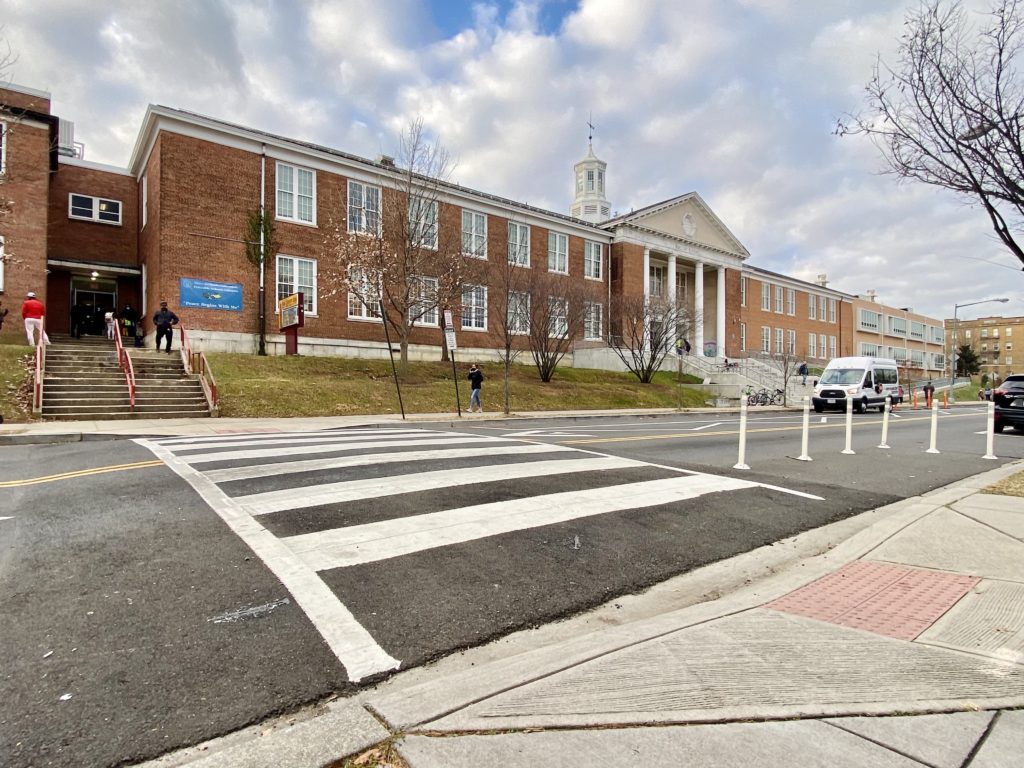On Tuesday, December 20, the DC Council unanimously passed the second and final vote on the Safe Routes to School Act, which would require sweeping traffic safety improvements around both DCPS and public charter schools in the District.
- Traffic Safety Infrastructure Around Public Schools. The bill requires DDOT to proactively install a sweep of traffic safety infrastructure around all public schools, including: raised crosswalks and curb extensions at every intersection adjacent to a school; speed bumps or speed tables on roads adjacent to school entrances; in-street crosswalk warning pylons or flashing pedestrian signs; and all-way stops or traffic signals at every intersection within a school zone.
- Expands and Standardizes School Zones. The legislation more than doubles the size of school zones to be 350 feet surrounding a school and includes crossing points even beyond that boundary. Recognizing that most schools are located in residential neighborhoods near parks and playgrounds and serve as community hubs, the bill makes the speed limit in school zones (15 mph) on non-arterial streets effective seven days a week from 6am-7pm.
- Strengthens Crossing Guard Program. The Safe Routes to School Act simplifies the process for schools to apply for crossing guards by creating one simple online form, instead of each school needing to email their request ad hoc. The bill also allows schools to request crossing guards outside of regular school hours to provide coverage for students with atypical schedules or extra-curricular programming. And the legislation also enhances the training that crossing guards are required to receive.
- Equitable Approach to School Traffic Safety. Recognizing traffic safety infrastructure is not equitably distributed in the District, the bill directs DDOT to prioritize schools that are most vulnerable to traffic violence and schools that serve the most at-risk students.
- Transparency, Accountability, and Data Collection. School action plans completed by DDOT must be implemented within a year. School safety requests must be tracked on the public-facing TSI dashboard. And failures to implement the bill’s requirements must be explained in writing and justified based on safety or engineering requirements.
The Safe Routes to School Act comes at a time when the District is struggling with a high number of traffic fatalities. Zy’aire Joshua and Timothy Abbott in Ward 4 were two of many young lives lost on our streets in recent years. And across our city, dangerous driving leads to severe injuries, daily near-misses, and widespread fear among families for their children walking or biking to school.
“DC residents are desperately calling out for safe, walkable communities. We will fail them if we only focus on improving safety at one intersection or one school at a time,” said Councilmember Janeese Lewis George. “This legislation creates a proactive, comprehensive, and equitable approach to keeping our students safe.”
This bill was passed jointly with Councilmember Christina Henderson’s bill to strengthen DC’s Safe Passage program, which mobilizes staff on major school corridors to ensure that students arrive to and from school safely. The bills were advanced together as the Safe Streets for Students Amendment Act of 2022.
In addition, the Council passed the Automated Traffic Enforcement System Revenue Designation Act, which creates a mechanism to fund the bill by dedicating future traffic camera revenue to implementing the Safe Routes to School Act and other laws passed to improve traffic safety. This will ensure that revenue from traffic cameras is reinvested directly back into making our communities safer.
The Safe Routes to School Act was co-introduced by Chairman Phil Mendelson and Councilmembers Brianne Nadeau, Brooke Pinto, Mary Cheh, Kenyan McDuffie, Charles Allen, Vincent Gray, Trayon White, Anita Bonds, Elissa Silverman, Robert White, and Christina Henderson — every member of the DC Council.


